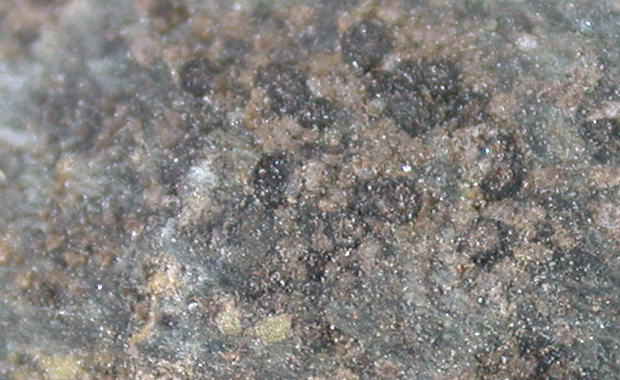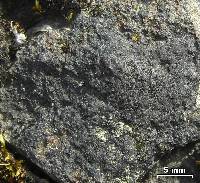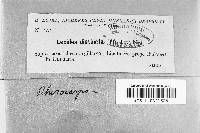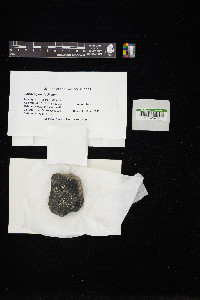
Consortium of Lichen Herbaria
- building a Global Consortium of Bryophytes and Lichens as keystones of cryptobiotic communities -
- Home
- Search
- Images
- Species Checklists
- US States: O-Z >
- US National Parks
- Central America
- South America
- US National Parks
- Southern Subpolar Region
|
|
|
|
Family: Rhizocarpaceae
[Buellia distincta (Th. Fr.) H. Olivier, moreDiplotomma distinctum (Th. Fr.) Jatta, Lecidea distincta (Th. Fr.) Stizenb., Lecidea distincta f. distincta (Th. Fr.) Stizenb., Lecidea distincta f. subobscurata Nyl., Lecidea obscurata f. orphnina Vain., Lecidea petraea var. ambigua Schaer., Rhizocarpon ambiguum (Schaer.) Zahlbr., Rhizocarpon ambiguum f. albicans (Körb.) Szatala, Rhizocarpon ambiguum f. ambiguum (Schaer.) Zahlbr., Rhizocarpon ambiguum f. cinereum (Flot.) Szatala, Rhizocarpon ambiguum f. dendriticum Erichsen, Rhizocarpon ambiguum f. fuscum (Flot.) Szatala, Rhizocarpon ambiguum f. soreumaticum (Flot.) Szatala, Rhizocarpon obscuratum subsp. orphninum (Vain.) Vain., Rhizocarpon orphninum (Vain.) Vain., Rhizocarpon orphninum f. orphninum (Vain.) Vain., Rhizocarpon orphninum f. platycarpa Räsänen] |
Nash, T.H., Ryan, B.D., Gries, C., Bungartz, F., (eds.) 2004. Lichen Flora of the Greater Sonoran Desert Region. Vol 2. Life habit: lichenized, not lichenicolous Thallus: crustose, areolate; prothallus: usually present, black, dendritic areoles: mainly angular (not peltate), flat to weakly convex, usually contiguous, 0.2-0.5 mm in diam. surface: gray-brown to brown or occasionally red-brown cortex: thin, 5-15 µm thick, +with a thin epinecral layer up to 8 µm thick medulla: white, I+ blue Apothecia: round to angular, 0.3-1 mm in diam. disc: black, remaining +flat, usually epruinose margin: +immarginate or with thin persistent margin exciple: K+ red epihymenium: carbonaceous incrusted, in section brown-black, opaque, K+ red or reddish violet hymenium: hyaline, 70-130 µm tall; paraphyses: capitate, with dark tips; hypothecium: violet-brown or olive-black, K- ascospores: hyaline or sometimes greenish brown with age, (1-)3(-5)-septate to submuriform, ellipsoid, 24-32 x 11-15 µm, halonate Pycnidia: frequent, black, almost globose, on the prothallus or immersed in the areoles conidia: hyaline, filiform, 6-12 x 0.4-0.6 µm Spot tests: medulla K+ yellow, C-, KC-, P+ yellow Secondary metabolites: stictic acid according to Runemark (1956) but not confirmed by Thomson (1997). Substrate and ecology: on siliceous rocks and walls, in low, moist and cool places World distribution: Greenland, North and South America, and widespread in Europe Sonoran distribution: Arizona. |
Powered by Symbiota













































